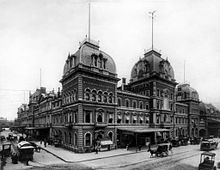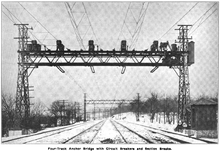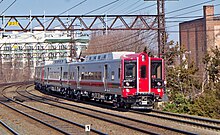New Haven Line
| New Haven Line | |||||||||||||||||||||||||||||||||||||||||||||||||||||||||||||||||||||||||||||||||||||||||||||||||||||||||||||||||||||||||||||||||||||||||||||||||||||||||||||||||||||||||||||||||||||||||||||||||
|---|---|---|---|---|---|---|---|---|---|---|---|---|---|---|---|---|---|---|---|---|---|---|---|---|---|---|---|---|---|---|---|---|---|---|---|---|---|---|---|---|---|---|---|---|---|---|---|---|---|---|---|---|---|---|---|---|---|---|---|---|---|---|---|---|---|---|---|---|---|---|---|---|---|---|---|---|---|---|---|---|---|---|---|---|---|---|---|---|---|---|---|---|---|---|---|---|---|---|---|---|---|---|---|---|---|---|---|---|---|---|---|---|---|---|---|---|---|---|---|---|---|---|---|---|---|---|---|---|---|---|---|---|---|---|---|---|---|---|---|---|---|---|---|---|---|---|---|---|---|---|---|---|---|---|---|---|---|---|---|---|---|---|---|---|---|---|---|---|---|---|---|---|---|---|---|---|---|---|---|---|---|---|---|---|---|---|---|---|---|---|---|---|---|
| Route length: | 119 km | ||||||||||||||||||||||||||||||||||||||||||||||||||||||||||||||||||||||||||||||||||||||||||||||||||||||||||||||||||||||||||||||||||||||||||||||||||||||||||||||||||||||||||||||||||||||||||||||||
| Gauge : | 1435 mm ( standard gauge ) | ||||||||||||||||||||||||||||||||||||||||||||||||||||||||||||||||||||||||||||||||||||||||||||||||||||||||||||||||||||||||||||||||||||||||||||||||||||||||||||||||||||||||||||||||||||||||||||||||
| Power system : |
Direct current system: from 1993: Woodlawn - New Haven traction current system: third rail 700 V = coated from below |
||||||||||||||||||||||||||||||||||||||||||||||||||||||||||||||||||||||||||||||||||||||||||||||||||||||||||||||||||||||||||||||||||||||||||||||||||||||||||||||||||||||||||||||||||||||||||||||||
| Power system : |
AC system: to 1993: Woodlawn-New Haven from 1993 Pelham -New Haven traction power system: until the 1980s: 11 kV 25 Hz ~ from the 1980s: 12.5 kV 60 Hz ~ |
||||||||||||||||||||||||||||||||||||||||||||||||||||||||||||||||||||||||||||||||||||||||||||||||||||||||||||||||||||||||||||||||||||||||||||||||||||||||||||||||||||||||||||||||||||||||||||||||
|
|||||||||||||||||||||||||||||||||||||||||||||||||||||||||||||||||||||||||||||||||||||||||||||||||||||||||||||||||||||||||||||||||||||||||||||||||||||||||||||||||||||||||||||||||||||||||||||||||
The New Haven Line is a railway line in northern New York City that runs from New Haven , Connecticut to Mount Vernon , New York . The route belonged to the former New Haven Railroad (NH) and is now operated by the Metro-North Railroad . It has four tracks and is part of the long-distance route between Boston and Washington, DC , known as the Northeast Corridor (NEC). With 125,000 passengers carried daily, the New Haven Line is the busiest railroad in the United States.
history

The New Haven Line was built by the New York and New Haven Railroad (NY&NH) as part of the route from New York to Boston . The opening of the single-track line took place on December 29, 1848, with the trains south of Williams Bridge using the tracks of the existing Hudson Line to reach the Grand Central Depot in Manhattan . Between 1850 and 1853, the line was continuously expanded to double- track. In 1872 NY&NH merged with Hartford and New Haven Railroad (H&NH) to form New York, New Haven and Hartford Railroad (NYNH & HR, also called New Haven ). In 1899 the Grand Central Depot was replaced by the Grand Central Station, which was soon followed by today's Grand Central Terminal . Around 1900 the line was expanded to four tracks, with all level crossings being removed at the same time . The bascule bridges over the Mianus River and Saugatuck River were also rebuilt.
electrification




In order to further increase the performance of the line, it was decided to convert it to electrical operation . A traction current system with high-voltage single - phase alternating current was chosen for the first time . The energy was supplied via an overhead line with 11 kV alternating current and a frequency of 25 Hz. Because of its pioneering work, the New Haven Line was declared a National Historic Engineering Landmark by ASME in the 1980s .
system
The selected contact line voltage was the highest that could be generated by an alternator in the technology of the time. In contrast to later electrification in Europe, the relatively high frequency of 25 Hz was chosen because other systems were already operated with this frequency.
The electrical equipment was supplied by Westinghouse and the locomotives were built together with Baldwin . Until the renovation, the overhead line had a triangular structure, which is no longer common today, with two supporting cables supported against each other, on which the contact wire was suspended. 3/8 ″ gas pipe was used for the support and the hangers. The catenary gantries were set up at a distance of 91 m (300 ft ) and the contact wire ran in zigzag with a deflection of 220 mm (8.5 ″) from the center line. In this system, the contact wire and support cable were firmly anchored without tensioning, which led to the contact wire and support cable breaking in cold weather and in warm weather the contact line partially sagged so that the pantographs got tangled in the chain. The design of the overhead line was later referred to as FT-system, FT for F ix T ermination stands.
The route was supplied with energy from the coal - fired power plant in Cos Cob near the state border with New York .
Start of operations
Between 1905 and 1907 the section between Woodlawn and Stamford was electrified and in 1914 the rest of the route to New Haven.
The trains reached the Grand Central Terminal via the conductor rail track of New York Central (NYC). In addition to the pantographs for the overhead line operation, the locomotives were therefore also equipped with grinding shoes for collecting electricity from the third rail. In addition, a small pantograph was installed on the roof, which was used for larger switch combinations, where the conductor rail was not arranged on the side of the track, but in the middle above the track.
In the beginning, the electrical operation caused major problems. In addition to the lack of reactive power compensation , the overhead line system and pantographs in particular caused problems. It was therefore often the case that the New Haven locomotives were not available, so that the trains had to be pulled by locomotives of the NYC from Grand Central Terminal to Woodlawn, where they were taken over by New Haven steam locomotives . At the beginning, the situation looked so dire that the New Haven threatened to sue Westinghouse for the poor execution of the electrification. The technical problems were resolved in good time before a dispute arose in the court.
In 1914 the power supply was improved with the introduction of a symmetrical 2AC 22/11 kV autotransformer system.
Expansion from the 1980s
Between 1981 and 1986 the frequency of the traction current was changed to 60 Hz and the voltage increased to 12.5 kV. This meant that traction power generation in the Cos Cob power plant could be dispensed with and the decrepit facility was shut down. From now on, the electricity for the catenary will be drawn directly from the national grid.
From the early 1990s, the conversion of the above described FT system began in a common system with today abgespanntem supporting cable and contact wire, which as AT system for A uto- T ension is called. In addition to the replacement of the hundred-year-old catenary portals and the repair of their partially decomposed concrete foundations, the opportunity is used to renovate bridges while the track for the catenary construction is out of service. At some stations, provisional platform edges had to be erected so that passengers could switch to the otherwise platform-free middle tracks of the four-track line during the route renovation. The work on the section of the line in New York State was completed in 1993. During this conversion, the southern end of the overhead contact line was moved from Woodlawn to Pelham and the third rail was extended to Pelham.
The replacement of the catenary in Connecticut began in 2002. The first completed section was Greenwich-Stamford in May 2005. Thereafter, a section between Stratford and New Haven was replaced, where the work was completed in 2008. The remainder of the catenary between Stamford and Stratford was replaced by 2014. The cost of the entire project to convert the overhead line in Connecticut was $ 300 million.
On May 17, 2013, a Metro North train derailed near Fairfield Station and collided with an oncoming train. The accident left 76 injured. The cause was a broken rail bracket. In September of that year, a 138 kV rail power cable from Consolidated Edison failed in Mount Vernon . Because the second cable was also out of service due to repair and expansion work, the route was interrupted and lasted more than two weeks.
The aging infrastructure of the route repeatedly leads to operational disruptions that endanger the safety of travelers or at least cause trains to be delayed. Several times a week one of the four bascule bridges jams in the open position because they have long since reached the end of their service life and should be replaced. A 2014 study concluded that renovation work on the line would require $ 3.6 billion.
business
Regional traffic
Regional traffic is carried by the Metro-North Railroad. All trains to New York City go through the Park Avenue Tunnel to Grand Central Terminal . The vehicles must be equipped for operation with 700 V from the third rail as well as for catenary operation. The system change takes place west of Pelham while driving. Trains starting north of Stamford are express trains from Stamford to Grand Central.
Class M8 railcars are used. The vehicles built by Kawasaki since 2010 replaced all older vehicles in the M2 , M4 and M6 series by July 2015 . 380 double railcars and 25 single railcars are available for operation. All railcars used by Metro-North on the New Haven Line have even numbers in the series designation, in contrast to the series with odd numbers, which cannot run on the New Haven Line due to the lack of a pantograph for catenary operation. All regional transport vehicles used on the New Haven Line are painted red, reminiscent of the color scheme of the New Haven Railroad.
A special feature for regional traffic in America were the bar cars used in some trains until 2014, which disappeared with the withdrawal of the M2 trains. However, it is planned to reintroduce them as part of a re-order for M8 trains.
Long-distance transport

Amtrak operates long-distance traffic . The trains run from Penn Station in Manhattan first east through the tunnels under the East River and along the Sunnyside Yard , then reach the New York Connecting Railroad . This leads north over the Hell Gate Bridge and joins the New Haven Line at New Rochelle . The line is equipped with overhead contact lines throughout, so that the vehicles do not have to have grinding shoes for the third rail. Acela Express trains run every hour during the week, stopping in Stamford and New Haven. You need an hour and 40 minutes for the whole route. The marginally slower, but considerably cheaper, Northeast Regional also stop in New Rochelle and Bridgeport . They mostly consist of Amfleet wagons pulled by ACS-64 locomotives. The AEM-7 and HHP-8 series locomotives previously used for this service are no longer in service.
Individual evidence
- ↑ a b Getting Back on Track: Unlocking the Full Potential of the New Haven Line , January 2014.
- ^ AC Electrification New York, New Haven & Hartford. ASME, accessed November 3, 2016 .
- ↑ a b Metro-North stands by century-old system as it replaces its power lines. In: www.electricityforum.com. Retrieved November 4, 2016 .
- ^ A b Fred Chojnicki, Jay Young, Rodney Armstrong: New Haven Mainline Catenary & Bridge Replacement Program. (PDF) Department of Transportation Connecticut, May 17, 2011, accessed November 4, 2016 .
- ↑ John L. Sprague, Joseph J. Cunningham: The Electrification of Grand Central Terminal. In: IEEE power & energy. February 2013, accessed November 4, 2016 .
- ↑ MW Savchak: New Haven line catenary replacement . April 1990, p. 91-94 , doi : 10.1109 / RRCON.1990.171665 ( PDF ).
- ↑ NTSB (Ed.): Derailment and Subsequent Collision of Two Metro-North Passenger Trains . Accident investigation report. October 24, 2014 ( PDF ).
- ^ Matt Flegenheimer: Power Failure Disrupts Metro North's New Haven Line; My Last Days . In: The New York Times . September 25, 2013 ( nytimes.com ).
- ↑ Timetable , as of April 2016.
- ↑ Update: New Haven Line M8 Rail Cars. In: web.mta.info. July 13, 2015, accessed November 5, 2016 .
- ^ Russell Blair: Bar Cars Returning To Metro-North's New Haven Line . In: Hartford Courant . September 13, 2016 ( courant.com ).






